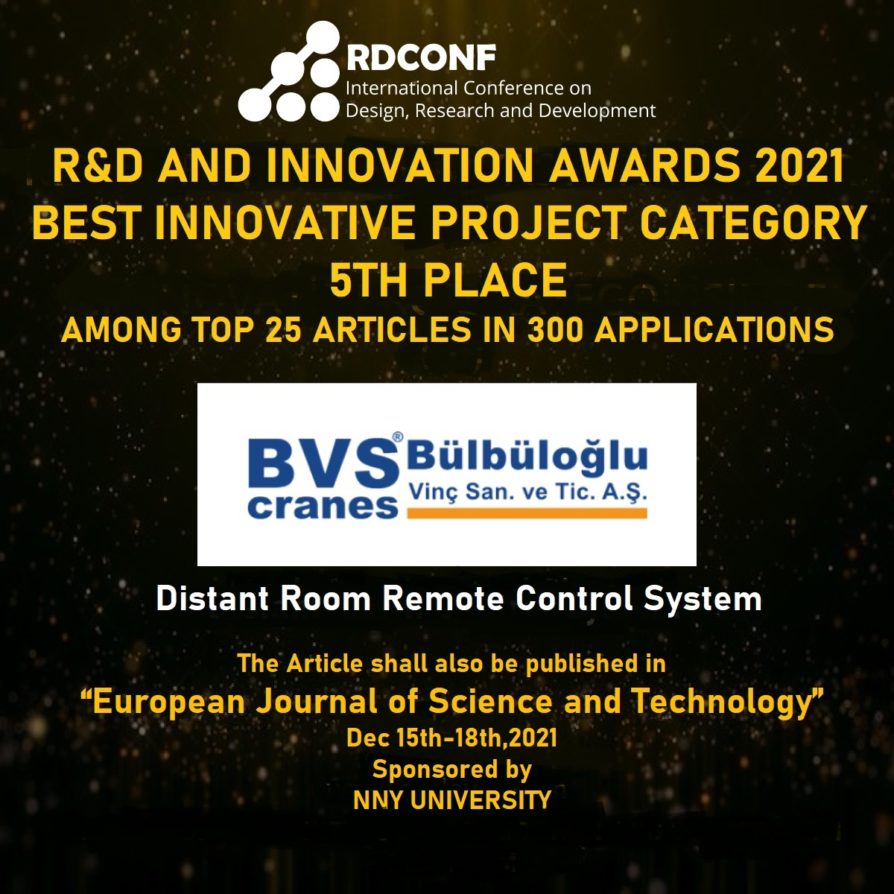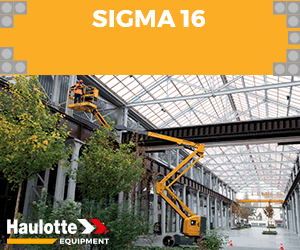)
Remote control study wins BVS Cranes accolades
BVS Cranes ‘Distant Room Remote Control System’ study has won an innovative project award and the study has published in an academic journal.
BVS Cranes is a certified R&D Centre by the Ministry of Industry and Technology in Turkey with a large and experienced engineering team and 36 years of background in the industry.
At the end of last year, the International Conference on Design Research and Development (RDCONF 2021) was held between 15-18 December in a virtual format.
Commercial vice president, GM Mech Eng Mehmet Erol said, BVS Cranes won 5th place in the ‘Best Innovative Project Category’ with its presentation of a scientific article on the ‘Distant Room Remote Control System’ and its real-life applications on a 350/80/10t casting crane. It was among the top 25 articles out of 300 international applications. The conference was sponsored by NNY University, and a large committee of respected international academics were involved in the selection process.”
Technical vice president, GM Mech Eng Kemalettin Kök, added, “The award also enabled the article to be published in the ‘European Journal of Science and Technology’ as an outstanding study. As a result of this study, some new state of the art, specific innovative features have been added in the remote crane control systems for the first time accelerating the speed and quality of electronic communication and it has been applied in a number of cranes designed and commissioned by BVS Cranes. The 350/80/10t capacity casting crane, built and commissioned in 2021 for the largest Turkish steel producer, ISDEMİR has been one of the most important applications.”
Abstract of the article:
Cranes are used in machinery, mining, metallurgy, energy, defense industry, chemical industry, etc around the world. They are used in every sector, especially in heavy industry and the areas of use and processes differ according to the purpose. The cranes are controlled from a push button with cable (moving with the trolley), a push button with cable (free from the trolley), a remote controller or an operator cabin connected to the crane. Existing forms of control reveal requirements such as climbing up to the cabin on the crane or operating the crane in heavy traffic areas and hazardous environmental conditions. Considering that the operators should stay in a safe area where cranes are operating under busy conditions, today’s communication technology allows the transfer of signals/snapshots at high speed, eliminating the need to be on the crane to operate it.
The scope of study consists of controlling the casting crane to be used in the foundry environment from a remote room located outside the crane working area. Since it is not possible to see the crane directly from the control room, cameras are placed in various areas on the cranes and surrounding area. In the control room, there are monitors for viewing camera screens. Since cranes are moving machines, the communication between them and the remote control room is provided by industrial ethernet based wireless transceiver units. Accordingly, there are Client Ethernet module antennas on the crane. In the hall where the crane is working, there are Access modules and antennas at fixed points. Because of the long distance between the area where the crane is working and the remote-control room, communication between these two points is provided by fibre optic cable. In addition, positioning sensors are used to operate the crane semi-automatically. In general, safety systems are used in automation and communication. As a result of the study, some new state of the art, specific innovative features have been added in the system for the first time to accelerate the speed and quality of electronic communication and it has been applied in a number of cranes designed and commissioned by BVS Cranes. One of them is the 350/80/10t capacity casting crane built and commissioned in 2021 for the largest Turkish Steel Producer, ISDEMİR.











